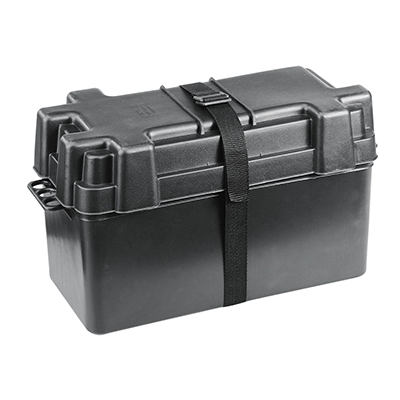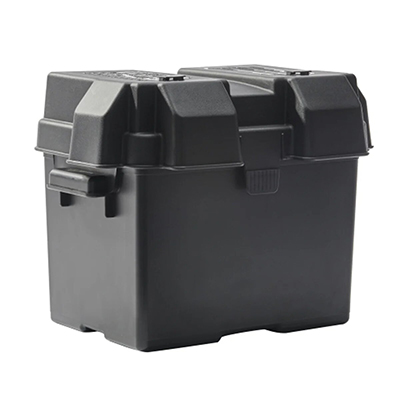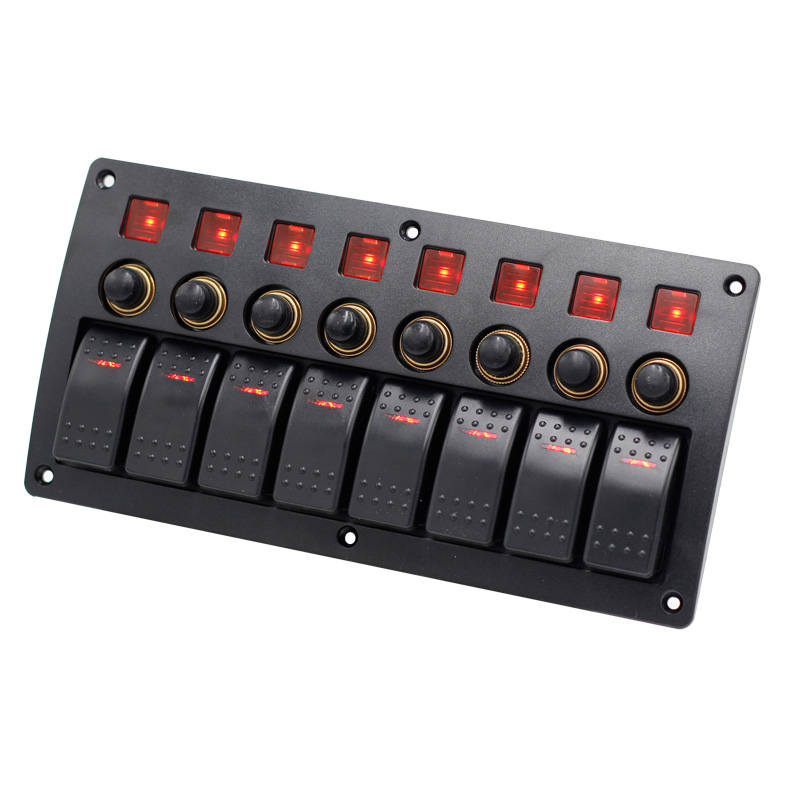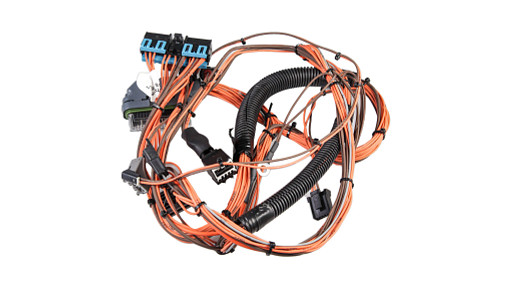Battery Box Selection Criteria
Case 2025-10-10
A battery box is a specialized enclosure designed to protect batteries from environmental damage, physical impact, and electrical hazards while ensuring safe operation. Serving as a critical component in electrical systems, it prevents acid leaks (for wet cell batteries), reduces fire risks, and maintains battery performance across diverse applications. Selecting the right battery box requires careful consideration of battery type, environmental conditions, and industry standards, while strict adherence to safety practices ensures long-term reliability.

Key Selection Criteria for Battery Boxes
1. Battery Type and Size Compatibility: Choose a battery box tailored to the specific battery chemistry and dimensions. For 12V 55-65Ah wet cell (lead-acid) batteries, opt for boxes with acid-resistant liners and drainage holes to handle potential leaks. Dry cell batteries (AGM, gel) require enclosures with ventilation to prevent gas buildup, while lithium-ion batteries need flame-retardant materials (e.g., UL94 V0-rated plastics) to mitigate thermal runaway risks. Ensure interior dimensions match battery dimensions—typically 270mm×175mm×190mm for 55-65Ah models—to avoid rattling and ensure a secure fit.
2. Environmental Protection Ratings: Select a battery box with an appropriate IP (Ingress Protection) rating based on usage conditions. For outdoor or wet environments (e.g., marine vessels, construction sites), choose IP65-rated boxes that resist dust and low-pressure water jets. Marine applications, such as rescue boats, require watertight enclosures meeting LSA Chapter 5 standards, which mandate water-resistant seals around cable penetrations and weathertight lids to prevent浸水 (water ingress) that could disable battery systems. For extreme temperatures, select boxes that operate within -40℃ to 70℃ to avoid material degradation.
3. Material Durability and Compliance: Prioritize boxes made from high-density polyethylene (HDPE) or polypropylene for chemical resistance and impact strength. Industrial and automotive applications may require reinforced materials to withstand vibration and mechanical stress. Ensure compliance with industry standards—UN 38.3 for lithium-ion battery transport, ISO 9001 for manufacturing quality, and CE certification for European markets. For marine use, verify adherence to IMO regulations for safety and environmental protection.
4. Installation and Mounting Features: Look for battery boxes with pre-drilled mounting holes (typically M6 threads) for secure attachment to vehicles or equipment, preventing movement during operation. Quick-release lids or snap-lock closures facilitate easy battery access for maintenance, while integrated cable management ports reduce wiring clutter and prevent connector damage. For high-voltage applications (e.g., NEV auxiliary batteries), choose boxes with insulated terminals to avoid short circuits.
Application-Specific Selection Considerations
Automotive Industry: Passenger cars and SUVs require compact, vibration-resistant battery boxes that fit within engine bays, with heat shields to protect against high temperatures from exhaust systems. Commercial vehicles may need larger enclosures for multiple batteries, with reinforced walls to withstand heavy-duty use.
Marine Sector: Boats and yachts demand watertight battery boxes with corrosion-resistant hardware to withstand saltwater exposure. Rescue boats must comply with LSA Chapter 5 requirements, which specify that battery boxes have “watertight enclosures with紧密的 (tight-fitting) lids and necessary ventilation holes” to ensure reliable operation during emergencies.
Renewable Energy and Industrial: Solar energy storage systems use battery boxes with ventilation to dissipate heat from charging cycles, while industrial settings require ruggedized enclosures to protect against dust, chemicals, and physical impact. Backup power systems may need stackable designs to accommodate multiple batteries.
Essential Safety Precautions for Battery Boxes
1. Proper Installation and Sealing: Ensure cable penetrations have intact rubber seals to maintain watertight integrity—damaged seals are a common defect in marine applications, leading to water ingress and battery failure. Mount the box in a level position to prevent acid pooling (for wet cell batteries) and secure it with corrosion-resistant fasteners to avoid loosening from vibration.
2. Regular Inspection and Maintenance: Conduct monthly checks (or quarterly for less demanding applications) to: Inspect lids and seals for cracks or wear; clean drainage holes to prevent clogging; verify mounting hardware is tight; and check for signs of corrosion or acid leaks. Replace damaged boxes immediately, as compromised enclosures can lead to battery damage or safety hazards.
3. Ventilation and Hazard Prevention: For wet cell and lithium-ion batteries, ensure ventilation ports are unobstructed to release flammable gases. Avoid installing battery boxes near heat sources (e.g., engines, heaters) or flammable materials. Use acid-resistant gloves and eye protection when servicing wet cell batteries to prevent contact with corrosive fluids.
4. Compliance with Safety Standards: Never modify battery boxes to fit incompatible batteries, as this can bypass safety features. For transport applications, ensure boxes meet UN 38.3 requirements for lithium-ion batteries, including impact resistance and thermal testing. Follow OEM guidelines for automotive and industrial installations to avoid voiding warranties or violating safety regulations.
Conclusion
Selecting the right battery box is a critical step in ensuring battery safety and performance. By focusing on compatibility, environmental protection, material quality, and industry compliance, users can choose enclosures that meet their specific needs. Pairing proper selection with regular maintenance and adherence to safety protocols—such as checking seals, ensuring ventilation, and complying with standards—minimizes risks and extends battery lifespan. Whether for automotive, marine, or industrial applications, a well-chosen battery box is essential for reliable and safe electrical system operation.


